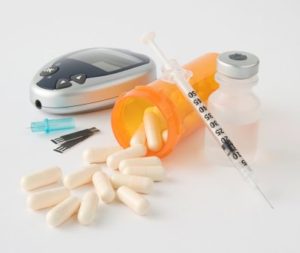
Type 2 Diabetes Drugs: SGLT2 Inhibitors Overview
Sodium-glucose cotransporter 2 (SGLT2) inhibitors are a new medicine that can be prescribed to help treat type 2 diabetes. The SGLT2 inhibitors help to remove excess glucose in the blood through the urine; this allows for the balancing of the glucose and insulin levels in the body. However, there have been cases reported of these SGLT2 inhibitors causing a sickness called diabetic ketoacidosis.
What are SGLT2 Inhibitors?
Type 2 Diabetes is a disease that affects over 28 million Americans. Type 2 diabetics lack the ability to correctly move sugar or glucose from the blood stream where it can be used as energy. This is because the insulin that is required to help move the glucose is either deficient in amount or the body has become resistant to it.
Sodium-glucose co-transporter type-2 (SGLT2) inhibitors are newer drugs used to treat Type 2 diabetes. They work differently than other types of medication used to treat Type 2 diabetes by blocking a chemical (SGLT-2) which allows the kidneys to reabsorb normally secreted glucose back into the bloodstream so that it may be conserved. If the SGLT2 enzyme is blocked, the extra sugar will be excreted in the urine, lowering the blood sugar.
Most antidiabetic medications work by increasing the body’s supply of insulin or by making the cells more sensitive to it. SGLT-2 inhibitors work differently and were designed to help patients who did not respond adequately to other medications, but they have cause serious side effects in some patients. Drug makers are facing thousands of lawsuits for injuries caused by new Type 2 diabetes drugs including the SGLT-2 inhibitors.
Examples of SGLT-2 Inhibitors
Four different SGLT-2 Inhibitor medications are available as single ingredient medications, and in combination with metformin, another antidiabetic medication.
- Jardiance (empagliflozin)
- Farxiga (dapagliflozin)
- Steglatro (ertugliflozin)
- Synjardy (empagliflozin, metformin)
- Xigduo (dapagliflozin, metformin)
- Segluromet (ertugliflozin, metformin)
SLGT2 Inhibitor Actions
When the kidneys work normally in a non-diabetic patient, extra glucose in the bloodstream filters from the blood and is reabsorbed back into the bloodstream by the kidney “tubules” where it can be used as energy.
As type 2 diabetics have too much glucose in the blood, SGLT2 inhibitors prevent the kidneys from reabsorbing that glucose so that it is passed out of the body in the urine. SGLT2 inhibitors result in over 100 grams of sugar being excreted into the urine. This is the same as excreting over 400 calories, causing some people to lose weight.
About Type 2 Diabetes and Treatments
Diabetes is a medical condition in which the body does not process sugar correctly. Over time, excessive glucose levels in the bloodstream may damage organs. The damaged organs may include the eyes, kidneys, and skin. These are resulting in blindness, kidney failure, and the necessity for amputation of the feet and legs.
Type 2 diabetes is the most common and affects up to 28 million Americans. It is often related to obesity and may contribute to a number of additional diseases including hypertension, high cholesterol levels and cardiovascular death.
In normal people, insulin helps to transport glucose or sugar from the bloodstream into the cells, where it can be used as energy. Type 2 diabetics may not produce enough insulin, or the blood cells may have become resistant to insulin – leaving much of the sugar in the bloodstream.
Antidiabetic medication has traditionally worked by increasing the production of insulin. These drugs assist with increasing the body’s sensitivity to insulin or by preventing insulin from being absorbed in the intestines.
As newer medications, SGLT2 inhibitors antidiabetics work differently from other antidiabetic medications. Those patients who struggled with other medications were given these instead, but many are suffering serious SGLT2 side effects and filing lawsuits.
SGLT-2 Type 2 Diabetes Drug Side Effects
All medications have side effects, most of which are mild to moderate. The SGLT2 inhibitors have a number of severe side effects that can be severe or even life-threatening.
Common side effects of SGLT2 inhibitors include:
- Genital yeast infections including vaginal, vulvar and penile (banal) infections
- Urinary tract infection including bladder and kidney infections
- Intolerance to the sun
- Rash and itching, often from yeast infection on skin
- Nausea
- Fatigue or loss of energy
More severe side effects may include:
- Hypotension (low blood pressure)
- Laboratory value changes (high potassium cholesterol, hemoglobin)
- Decreases in kidney function
- Other allergic reactions
Side effects which are severe or bothersome or those that occur suddenly should be reported to a health care practitioner immediately, and in some cases should be considered a medical emergency.
Diabetic Ketoacidosis
In May 2015, the FDA issued a warning letter regarding the risk of diabetic ketoacidosis, citing 20 serious adverse events reports the agency had received. Prescribing information for the medications has listed a “contraindication” (reason against use) for patients with DKA but literature contains no clear warning about the risk.
Diabetic ketoacidosis a severe condition which is caused by the body’s inability to use glucose as energy. When the cells cannot obtain enough glucose, fat stores must be used. Ketones, a highly acidic by product of fat metabolism, build up in the bloodstream, creating a dangerous medical condition which can quickly become life-threatening.
Symptoms of diabetic Ketoacidosis can include:
- Excessive thirst and hunger
- Excessive urination
- Abdominal pain or nausea
- Weakness, fatigue and dizziness
- Irritability
- Shortness of breath, sweating, rapid heartbeat
- “Fruity” odor to the breath
If the condition is not treated immediately, symptoms may become worse including:
- Vomiting
- Confusion and extreme irritability
- Dizziness and fainting
- Difficulty Breathing
- Unconsciousness
If left untreated, diabetic ketoacidosis may result in brain swelling or kidney failure or become life-threatening. Unfortunately, most Type 2 diabetics have never experienced ketosis and will not easily recognize the symptoms. Any symptom of Diabetic Ketosis warrants immediate medical attention.
SGLT-2 Inhibitors and Fournier’s Gangrene
Most recently, in 2018 the FDA issued a warning about SGLT-2 inhibitor use and Fournier’s gangrene. This condition is also known as necrotizing fasciitis of the perineum and is caused by an infection around the genitals of both men and women. Fournier’s gangrene may result in permanent damage to the perianal or genital region and in some cases may increase the risk of death.
Symptoms of Fournier’s gangrene may include:
- Tenderness
- Redness
- Swelling of genitals
- Swelling of perineum (between genitals and anus)
Though the condition is rare, it appears to be a much greater risk in people taking SGLT-2 inhibitors than those taking other types of diabetes medication.
Other SGLT-2 Concerns
Data shared in early 2017 by the European Medicines Agency found a high risk of toe amputation for those individuals using SGLT2 inhibitors. In January 2017, research was published in Diabetes Care showing that patients taking SGLT2 inhibitors may suffer the risk of renal injury.
Some medical professionals, including several FDA advisory committee members have expressed concern about an increased risk of heart attack and companies have been ordered to complete additional safety studies of the effects on the heart, bones, and liver and to look into the risk of cancer and pregnancy risk.
SGLT2 Warnings
Consumer advocacy group “Public Citizen” has also objected to marketing used for the SGLT2 inhibitors which state “advantages” of the drug including “reduced blood pressure” and the possibility of weight loss. Public Citizen has stated that hypotension (low blood pressure) is a listed side effect and not a benefit.
They have also objected to the non-approved claim that “some” patients may lose weight on these medications as the notification often appears close to the approved indications which the group feels may be confusing and cause some to believe the medication is approved for use as a weight loss agent. Public Citizen has all four SGLT-2 inhibitors on its “Do Not Use” list on its website.
Type 2 Diabetes Drug Lawsuits
Manufacturers of currently available SGLT-2 inhibitor medications are facing thousands of lawsuits due to injuries caused by the Type 2 diabetes drugs. Manufacturers that may have been named include:
- Jardiance – Eli Lilly and Boehringer Ingelheim
- Farxiga – AstraZeneca and Bristol-Myers Squibb
- Steglatro – Pfizer
- Synjardy – Eli Lilly and Boehringer Ingelheim
- Xigduo – AstraZeneca
- Segluromet – Pfizer
At least 20 deaths have been associated with SGLT-2 use. Injuries claimed in lawsuits have included Diabetic Ketoacidosis, Kidney Failure and Fournier’s gangrene. Plaintiffs are seeking compensation for their injuries. Some cases have been consolidated into multidistrict litigation (MDL) in the federal courts however no cases have yet been settled.
Notwithstanding claims relating to this product, the drug/medical device remains approved by the U.S. FDA.
Sources
- List of SGLT-2 Inhibitors, Drugs.com (2020)
- FDA warns on newer class of type 2 diabetes drugs, Reuters (05/2015)
- FDA Drug Safety Communication: FDA warns that SGLT2 inhibitors for diabetes may result in a serious condition of too much acid in the blood, U.S. Food and Drug Administration (05/2015)
- Should the FDA Require CV Outcome Studies for Diabetes Drugs Before Approval? Forbes (04/2015)
- FDA Urged to Fine Drugmakers Over Ads, FoxBusiness (04/2015)
- Diabetic Ketoacidosis, Mayo Clinic (10/2012)
- FDA Should Reject Dangerous Diabetes Medication, Public Citizen Tells Advisory Committee, Public Citizen (06/2015)
